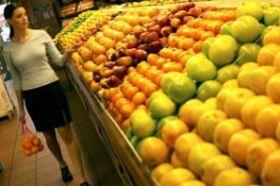
A nationwide project to improve public health across the US through increased fruit and vegetable consumption has found that the average American’s fruit and vegetable consumption still remains far below recommended levels.
The five-year progress report for the National Action Plan – developed in 2005 by the National Fruit & Vegetable Alliance (NFVA) and led by the Centers for Disease Control and Prevention (CDC) and the Produce for Better Health Foundation (PBH) – gives mostly low grades to government and private efforts to increase consumption.
Despite repeated warnings from high-level federal officials about the impact of diet-related disease, the study found that in an average day only 6 per cent of individuals achieve their recommended target for vegetables and only 8 per cent achieve their recommended target for fruit.
And while food consumed away from home makes up about a third of the average American’s daily calories, the report said it accounts for only 11 per cent of all fruit and vegetable consumption.
To put this in perspective, the study stated that eight of the states with the lowest fruit and vegetable consumption are also in the top 10 states with the highest obesity rates.
“A diet high in fruits and vegetables helps maintain a healthy weight and reduces the risk of several serious, chronic diseases,” said William Dietz, director of CDC's Division of Nutrition, Physical Activity, and Obesity.
“The NFVA report card illustrates the continued need to make our homes, worksites and communities places where the choice of healthy foods such as fruits and vegetables becomes the easiest choice. We need to continue our effort in making the healthy choice the easy choice.”
The report card assigned an ‘A’ grade to the WIC Fruit and Vegetable Vouchers programme, which was introduced as part of a special supplemental initiative for Women, Infants and Children and has allowed broad inclusion of fruits and vegetables, which had been previously excluded for 30 years.
School food and restaurant menus received a ‘C’ grade for making slight progress over the past five years, particularly with greater availability and variety in fruit and vegetable choices in fast food establishments and cafeterias.
Last, a failing grade was assigned to the healthy food advertising category, due to the decrease in nutritious food advertising over time.
“The data clearly indicates that resolving our public health crisis depends on the consistent success and efforts of the many stakeholders involved in America’s food choices and eating habits,” said Elizabeth Pivonka, president and CEO of PBH.
“From both the private and public sectors, organizations across the spectrum have a vital role to play in making increased fruit and vegetable consumption a reality for all Americans.”
In a set of forward looking strategies, the report issued recommendations, that when taken together, would begin to close the gap that exists between actual and recommended fruit and vegetable consumption in this country, they include:
·Increasing the accessibility of fruits and vegetables in communities, schools, worksites and restaurants;
·Strengthening nutrition education programmes and promotion efforts that give consumers the skills and motivation they need to make better food choices; and
·Aligning federal funding priorities to be consistent with federal Dietary Guidelines.
“Healthy decisions should not be hard decisions, but for most Americans this is the reality,” said Christine Tobin, president of health care and education at the American Diabetes Association.
“We need to focus our efforts on promoting healthful foods. Chronic and preventable diseases are linked to obesity and poor diets. It’s time to step up our prevention efforts.”



